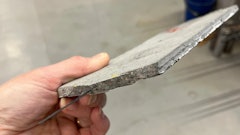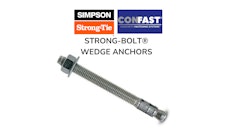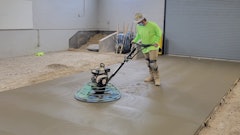

The Occupational Safety and Health Administration (OSHA) today issued a Request for Information (RFI) that seeks comments on how to prevent injuries and deaths from reinforcing concrete activities in construction and from vehicles and mobile equipment backing into workers in construction, general industry, agriculture and the maritime industry. OSHA will use the comments received to learn more about how workers get injured and what solutions exist to prevent injury and death, including possible regulatory action.
Workers in the concrete industry using reinforcing methods to strengthen concrete face potentially life-threatening hazards including impalement, collapsed walls and slips, trips and falls. OSHA data indicate that more than 30 workers died while performing these activities from 2000 to 2009. Safety issues relating to these operations were brought to OSHA's attention in a 2010 petition from the International Association of Bridge, Structural, Ornamental & Reinforcing Iron Workers and an industry coalition of stakeholders including the Concrete Steel Reinforcing Institute, the Western Steel Council and the Center for Construction Research and Training.
Workers also face fatal injuries when struck by vehicles backing up or when caught between backing vehicles and an object, such as a loading dock. OSHA found that about 360 workers died from backover incidents from 2005 to 2010. OSHA's request for information is consistent with other agencies' regulatory actions, including the National Highway Traffic Safety Administration, which issued a Notice of Proposed Rulemaking requiring cameras in certain vehicles under 10,000 pounds to prevent people from getting backed over.
Comments on this RFI must be submitted by June 27, 2012. Interested parties may submit comments at http://www.regulations.gov, the Federal eRulemaking Portal. Comments may also be submitted by mail or facsimile. See the Federal Register notice for details.



























